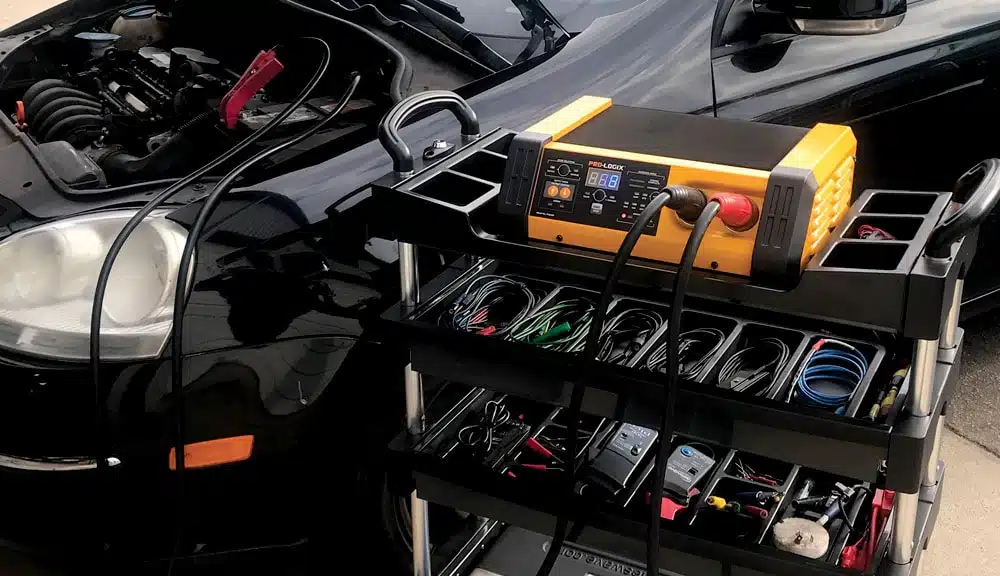In an earlier Deep Dive, we dug into the power supply function in terms of what it does, how it works and when it is needed in vehicle repair and maintenance. As a follow-up to that article, today, we’re going to focus on power supply mode for reprogramming/reflashing applications: what does the vehicle need, what features should you look for and what difference does it make for the reprogramming event?
When we talk about using a power supply to support reprogramming, the goal is to provide a stable system voltage environment in which the reprogramming event can take place. The key word is stability – we want to keep the subject system consistently at the recommended voltage level, with as little variation (from the power supply or from vehicle system factors) as possible.
For us, this goal can be reduced to several criteria, including:
- How much voltage ripple is there in the power being sent to the vehicle? (less is better)
- How quickly does the power supply react to changes in system demand? (faster is better)
- How much voltage drop is there across the power supply’s output cables? (less is better)
- How long can the power supply deliver its max output? (longer is better)
Below is a comparison of our PRO-LOGIX PL6100 Flashing Power Supply and a popular competitive model, which we’ll call Competitor A.

This value defines the stability of the power delivery. We measure this value by looking at the change from peak to peak (Vp-p) in the power delivered from the power supply to the vehicle. The ideal amount of ripple is 0.0000V. It is also important to take this measurement across the entire output current range of a power supply to identify if there are areas of the output that become less stable. In this comparison with Competitor A, as each model nears max current output (90A of 100A max), Competitor A’s ripple is 3X that of the PL6100, resulting in a far less stable vehicle voltage environment when the unit’s power is most needed.
Load Response
Another key component of stability is a power supply’s ability to react to changes in load demand, specifically quick spikes in demand during the reprogramming event (additional modules start programming, a large fan turns on, etc.). The desire for stability means that we desired for output voltage sag that results from a sudden increase in demand to be as short as possible – the vehicle wants to be returned to the desire voltage level as quickly as possible. As you can see from the above details, the difference between the two units is drastic, with the PL6100 roughly 8X more responsive to load demands than Competitor A’s product.
Voltage Drop
Controlling for voltage drop across the output cables is another way we ensure that the desired voltage level is maintained in the connected vehicle. As can be seen in the table values, the PL6100 voltage drop is significantly lower than that of the Competitor A’s voltage drop. This means that the PL6100 is more likely to deliver the desired voltage at the vehicle (e.g. dialing in 13.7V goal voltage and actually getting that output at the clamps).
Max Output – How Long
Lastly, the PL6100 is able to provide 100A indefinitely (3 hrs+), whereas the many competitive units have a limit to the amount of time they can provide max output, after which they step down to a lower top output level. In the case of competitor A, maximum output (100A) is limited to 5 minutes, and then its maximum available output is reduced to a lower level. On many current vehicles, 5 minutes @ 100A is plenty to perform the standard reprogramming tasks. But, on tech heavy late model high end vehicles and a much greater percentage of future vehicles, 5 minutes will not be adequate to perform the task.
Again, stability is the name of the game when it comes to using the power supply function to support vehicle reprogramming/reflashing applications. Have you run into problems with a reflash application due to an unstable electrical system? We’d love to hear about how you overcame these issues in the comments below.







